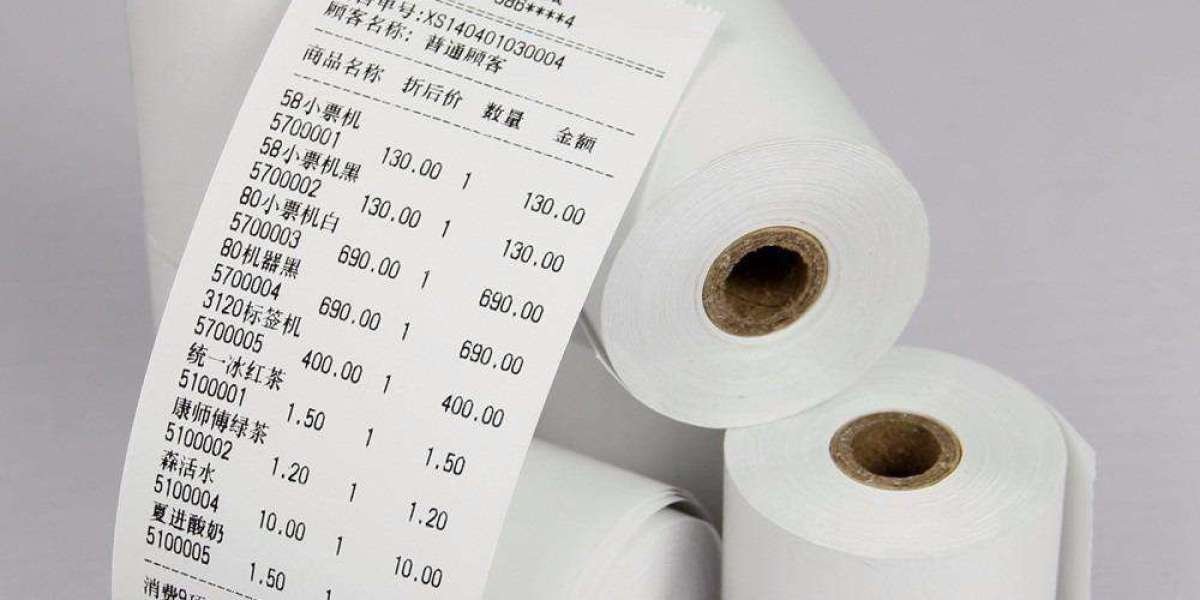Introduction
Thermal paper is one of the most essential materials used in businesses today, especially in industries that rely on fast and efficient printing. From retail stores and restaurants to banks and hospitals, thermal paper plays a vital role in producing receipts, tickets, and labels without the need for ink or toner. This article will explore what thermal paper is, how it works, and why it’s a crucial part of modern printing solutions.
What is Thermal Paper and How Does It Work?
Thermal paper is a special fine paper that changes color when exposed to heat. It is coated with a layer of heat-sensitive chemicals, including dye and developer compounds. When the paper passes through a thermal printer, a heating element selectively heats specific areas of the paper. The heat causes a reaction between the dye and the developer, producing sharp, black (or sometimes colored) images or text instantly.
Unlike traditional printing methods that require ink cartridges or ribbons, thermal printing uses heat as the sole printing mechanism. This makes it a cost-effective, efficient, and maintenance-free solution for many industries.
There are two main types of thermal printing methods:
- Direct Thermal Printing – The print head directly contacts the coated paper, and the image is formed through heat activation. This method is ideal for receipts and short-term labels.
- Thermal Transfer Printing – Uses a ribbon coated with wax or resin-based ink, which transfers onto the paper through heat. This method is used for more durable labels that must withstand time, moisture, and friction.
Thermal paper is used in various applications like POS receipts, ATMs, parking tickets, barcode labels, and even medical equipment printouts. Its speed and precision make it a preferred choice for businesses that need reliable and high-quality printing.
Advantages of Using Thermal Paper
Thermal paper offers numerous benefits that make it superior to traditional printing papers. These advantages contribute to its widespread adoption in commercial and industrial sectors.
1. No Ink or Toner Required
One of the biggest advantages of thermal paper is that it eliminates the need for ink cartridges, ribbons, or toners. This reduces operational costs, simplifies maintenance, and ensures a clean and consistent printing process.
2. High-Speed and Clear Printing
Thermal printers produce text and images almost instantly. This fast printing capability is ideal for retail stores, restaurants, and transport systems where speed and efficiency are critical. The prints are also smudge-free and sharp, ensuring legibility.
3. Low Maintenance Costs
Since thermal printers have fewer moving parts and don’t use ink-based systems, they are less prone to breakdowns. This results in lower repair costs and longer equipment life.
4. Compact and Quiet Operation
Thermal printers are typically smaller and quieter than traditional printers, making them perfect for counters and front-desk operations. They operate smoothly without noise, providing a better customer experience.
5. Durable and Long-Lasting Prints
Although direct thermal prints may fade over time, high-quality thermal papers are designed with protective coatings that resist water, oil, and light damage. This ensures receipts and labels remain readable for extended periods.
6. Eco-Friendly Options
Modern manufacturers are producing BPA-free and recyclable thermal papers that minimize environmental impact. These papers are safe for both users and the environment, supporting sustainability efforts.
If you want to know more information you can visit to pos software price in pakistan
Applications and Importance of Thermal Paper in Daily Life
Thermal paper might seem like a simple product, but its applications touch almost every part of modern life. It’s not just for receipts—it’s also used in sectors that require precise, reliable, and fast printing.
Retail and Point of Sale (POS) Systems
Every time you make a purchase at a store or restaurant, the receipt you receive is printed on thermal paper. POS thermal printers can produce thousands of clear receipts daily without needing ink replacements.
Banking and Finance
ATMs, credit card machines, and cash registers use thermal paper for transaction slips and records. Its reliability ensures accurate financial documentation for both customers and banks.
Healthcare and Laboratories
In hospitals and clinics, thermal paper is used in medical devices such as ECG machines, ultrasound printers, and prescription labeling. The precision and clarity of thermal printing are vital for patient safety and recordkeeping.
Logistics and Transportation
Thermal paper is used in barcode labels, shipping documents, and parking tickets. Its durability ensures that printed information remains readable even in challenging conditions like heat or moisture.
Entertainment and Ticketing
Movie theaters, concerts, and public events use thermal paper for entry tickets. Its quick printing and tamper-resistant nature make it ideal for high-volume ticketing systems.
Conclusion
In today’s fast-paced world, thermal paper continues to be a silent yet powerful contributor to daily operations across countless industries. Its speed, cost-effectiveness, and reliability make it an indispensable component of modern printing systems. Whether it’s a grocery receipt, a shipping label, or a hospital record, thermal paper ensures information is recorded efficiently and accurately.As technology evolves, manufacturers are developing more advanced and eco-friendly thermal papers, ensuring that this essential product continues to serve the growing needs of global businesses while reducing its environmental footprint. In short, thermal paper is not just a medium for printing—it’s the backbone of seamless business transactions and efficient information handling. For further articles visit here



